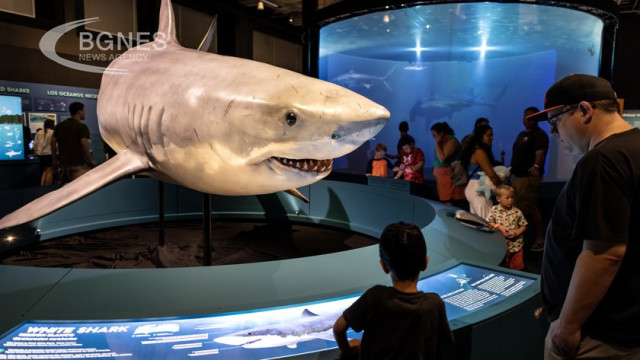We've always been fascinated watching sharks break the surface of the water in a spectacular show of force while watching Shark Week. But why do these large marine predators then dive back into the deepest and darkest part of the sea? Scientists at the Woods Hole Oceanographic Institution (WHOI) have revealed that these creatures often venture into the deep parts of the ocean, specifically the mesopelagic zone, which lies at depths between 200 and 1,000 meters below the sea surface.
This extremely important habitat has been largely neglected as home to large carnivore species.
The study involved extensive data collection from various scientific partners. Researchers synthesized information from electronic tags, ship-borne sonar, Earth-observing satellites, and ocean models to assess the ecological importance of deep diving for large pelagic predators. The study also highlighted the important ecosystem services provided by a healthy mesopelagic zone.
"No matter which of the top predators you look at and where in the world's oceans, they all spend time in the deep ocean," says study author Camryn Brown, an assistant professor at WHOI. "All of these animals that we think inhabit the surface ocean use the deep ocean much more than we previously thought."
Diel vertical migration
The study is based on data from 344 electronic tags tracking these creatures for 46,659 days in 12 species in the North Atlantic, including white sharks, tiger sharks, whale sharks, yellowfin tuna and swordfish, among others.
The dive patterns of the fish recorded from the tags were compared with sonar data that depicted the daily movements of the deep scattering layer (DSL). The DRS is an area densely populated with small fish and marine organisms, so dense that early sonar users once assumed it was the ocean floor. During the day, the inhabitants of the DRS reside in the mesopelagic zone, but at night they swim to the surface waters to feed. When the sun rises, they descend back into the twilight zone, a phenomenon known as Diel Vertical Migration, which scientists at WHOI have been studying for years.
"When we looked at this particular process from different perspectives, from diving and acoustics together, to see everything falling into place was very exciting," notes study co-author Alice Della Pena, a research associate at the University of Auckland in New Zealand.
Although some species adhere to the expectation of diving to feed, there are intriguing outliers. For example, swordfish followed a strict diel vertical migration pattern, but others showed unexpected behavior, diving to greater depths than expected. This has led to questions about the reasons for these deep dives, with previous research suggesting that they may serve predator avoidance or navigation.
"Sharks and tunas are evolutionary distant from each other and have very different sensory systems. Yet both groups think it's worth behaving this way," says study co-author Simon Thorrold, a fish ecologist at WHOI, stressing that these creatures can transport significant amounts of carbon dioxide from the surface to the deep ocean, contributing an ecosystem service that has not yet been quantified.
Protecting our planet's shark population
The study highlights the importance of protecting the mesopelagic zone, which is critical for many species targeted by industrial fisheries. The document warns against premature fishing or mining activities in this ecosystem, given the overlap of fishing efforts, expected climate-induced changes and the potential extraction of mesopelagic biomass - all of which could threaten this vital ecosystem.
"We find that the mesopelagic zone provides important support to other parts of the ocean," explains Della Pena. "If we start exploiting these mesopelagic ecosystems before we know how they function, there's a really big risk of causing damage that's not easily reversible."/BGNES







